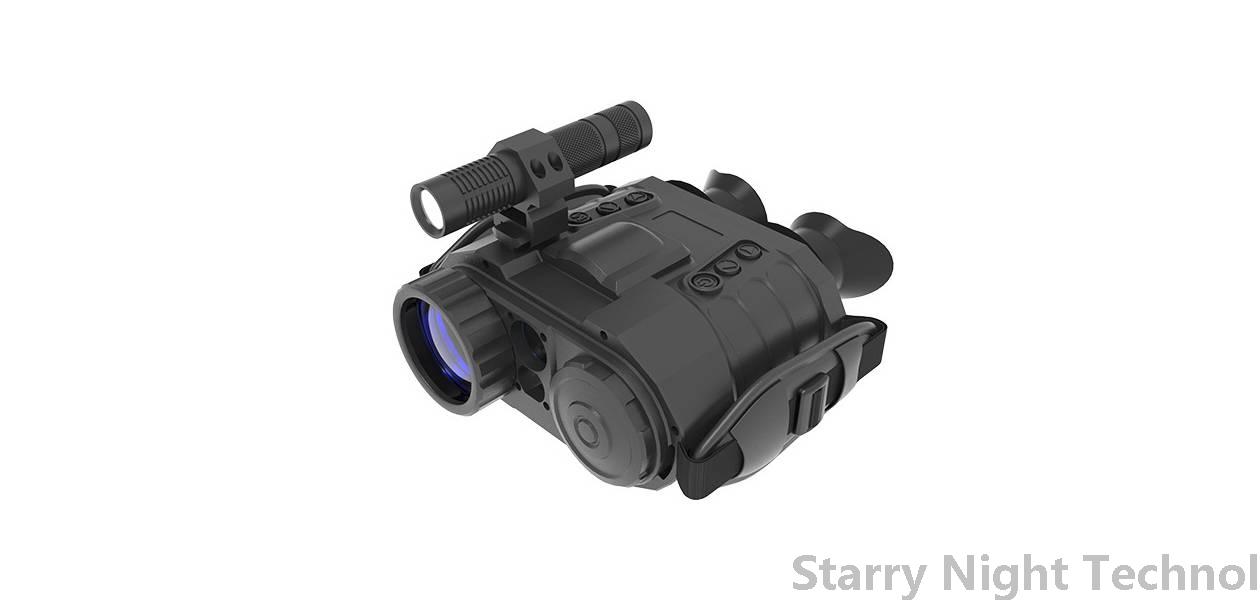The Evolving Landscape of Night Vision Technology in Different Sectors
1759802426000

Night vision technology has historically been associated with military operations, but its applications have expanded significantly over the past few decades. Innovations in optics, sensor technology, and image processing algorithms have opened new doors for night vision devices across various sectors including defense, law enforcement, wildlife conservation, marine navigation, and even consumer products. As such, understanding the technological advancements and their implications can provide valuable insights into current trends and future possibilities.
#### Military and Defense
The most recognizable use of night vision technology is within military contexts. Traditionally reliant on image intensification (I2) night vision goggles (NVGs), modern militaries are now integrating thermal imaging and digital systems to enhance visibility during nighttime operations. Advanced night vision devices allow soldiers to operate effectively in low-light environments, providing tactical advantages that can often be life-saving.
Recent developments include fusion technology which blends infrared data with standard optical information, delivering clearer images under varying conditions. Increased resolution capabilities also mean better target identification at greater distances, allowing for precision in identification without revealing the operator’s position via telltale light sources. Furthermore, compact and lightweight materials make these cutting-edge devices easier to deploy, enhancing mobility and effectiveness on battlefields.
#### Law Enforcement and Public Safety
The evolution of night vision technology extends beyond military use into civilian applications, particularly in law enforcement and public safety. Police forces utilize night vision equipment for surveillance, search-and-rescue missions, and high-stakes situations like standoffs or manhunts. With drones equipped with night vision functionality becoming more common, aerial surveillance offers a new perspective in monitoring areas that would normally require time-consuming foot patrols, thereby improving efficiency and resource allocation.
Moreover, improvements in affordability due to competition among manufacturers have made night vision gear increasingly accessible to local departments — something that was once limited only to specialized units. This democratization of advanced technologies empowers smaller agencies to conduct effective nighttime operations while keeping costs manageable.
#### Wildlife Conservation
Conservationists have adopted night vision tools to monitor endangered species and combat poaching activities. Thermal cameras help track specific creatures without disturbing their natural habitat. Observing animal behavior, migration patterns, and population dynamics in dark conditions allows researchers to gather vital ecological data essential for protecting vulnerable species.
 #### Marine Applications
#### Marine ApplicationsNavigating the waters under the cover of darkness poses unique challenges, making night vision technology crucial for maritime industry practices such as fishing, shipping, and recreational boating. Many modern vessels are outfitted with thermal cameras and night vision scopes that aid captains in detecting hazards, monitoring traffic, and ensuring safe docking during night hours.
Marine surveillance using night vision plays an additional role in mitigating smuggling and illegal fishing activities. Law enforcement whilst patrolling coastlines benefits from enhanced visibility aided by night vision technology, helping to promote safe and lawful maritime norms.
#### Consumer Market
In recent years, night vision technology has moved far beyond professional industries into everyday consumer markets. Hunting enthusiasts, campers, and outdoor adventurers are embracing handheld night vision devices and monoculars designed for leisure use. Affordable options employing solid-state electronics deliver satisfactory performance levels for non-professionals seeking exploration or security solutions after dusk.
Smartphone accessory technologies also see night vision adaptations, allowing amateur photographers and videographers to capture footage in poor lighting conditions effortlessly. Whether for enhancing home security systems or elevating camping experiences, access to compact and multifunctional devices caters to consumers’ versatile needs—all rooted in age-old principles of night vision technology.
#### Challenges and Future Outlook
Despite the exciting potential, there remain several challenges ahead for the continuation of advancements in night vision technology. Issues of reliability, especially in extreme weather or environmental factors, need addressing continually, alongside ethical considerations related to privacy and misuse of surveillance capacities. Regulation will play an integral role moving forward, balancing societal benefit against invasion concerns.
Emerging technologies such as augmented reality (AR) and artificial intelligence (AI) promise enhancements to operational capabilities—integrating I2 capabilities with real-time data analytics could fundamentally shift how we perceive and interact with night vision technology. For example, smart glasses utilizing AI might identify entities captured through lenses, offering operators unprecedented situational awareness.
As night vision technology evolves across diverse sectors, it becomes apparent that its trajectory is not merely about extended visibility but embodies a deeper interplay between innovation and practicality. By addressing challenges head-on and continuously adopting emerging technologies, industries committing to advancing night vision solutions are poised to redefine boundaries well into the coming decade. Emphasizing the integration of ethics, accessibility, and teamwork across sectors will further enhance collective efforts towards safer and smarter responses in low-light scenarios.
What to buy for night vision device accessoriesStarry Night Technol

